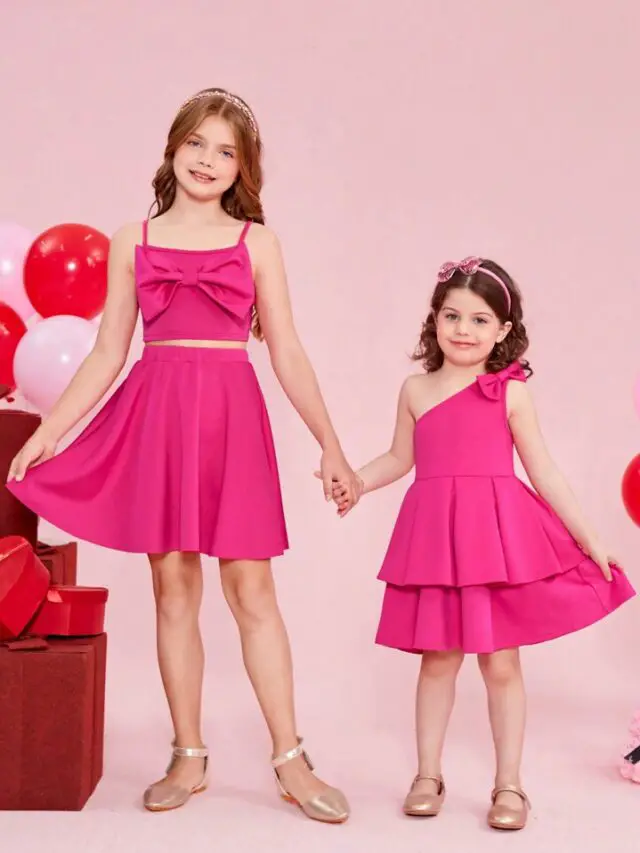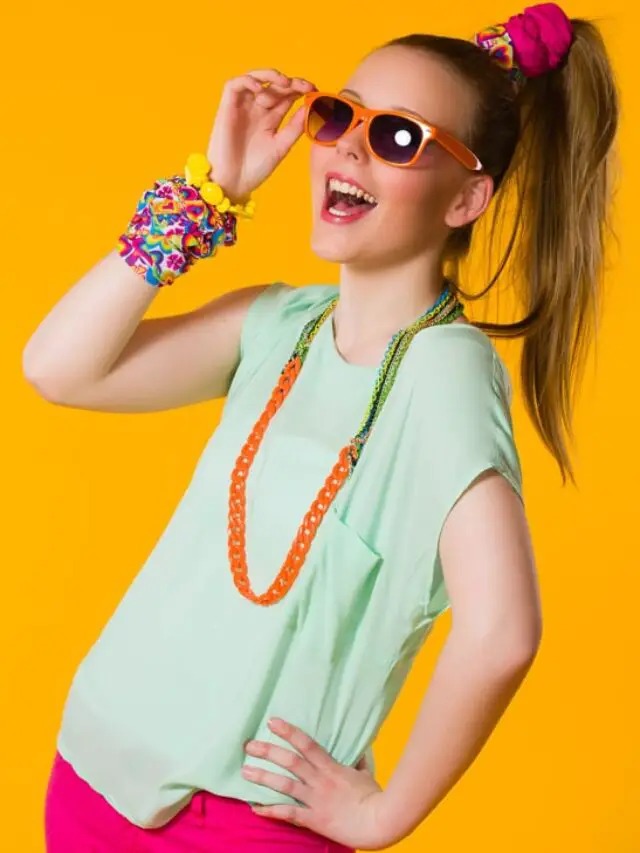Introduction
Peacock Feathers have long been prized for their magnificent beauty. They are distinguished from other bird plumages by their vivid colors and eye-catching patterns. These feathers, which are primarily observed on the male peacock, are not only ornamental but also crucial to the ceremony of courtship and exhibition of these birds.
The vivid colors and intricate patterns of peacock feathers captivate the imagination, giving them an unusual charm. Beyond just being decorative these feathers have significant cultural symbolism and serve as inspiration for traditions, art, and fashion. Let us examine these wings of the planet and their diverse significance in more detail.
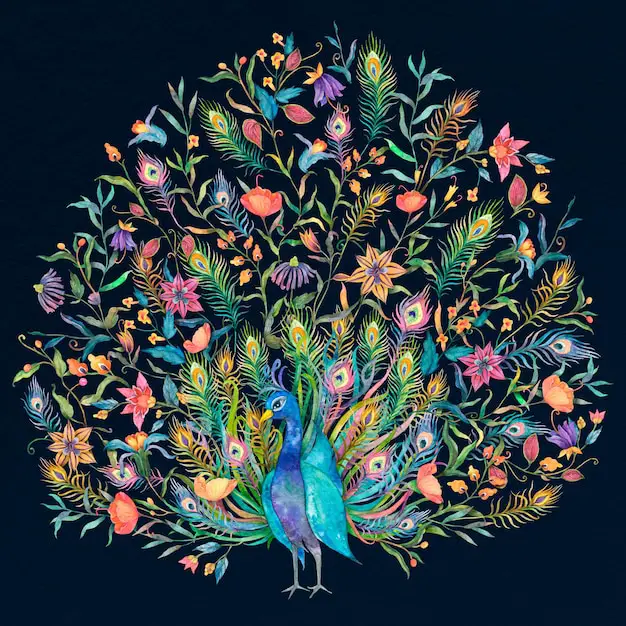
Table of Contents
Beauty and Symbolism
The magnificent spectrum of colors of peacock feathers represent life, beauty and dynamism. In many cultures, certain colors of blue, green, and purple stand for qualities like compassion, integrity, and immortality.
Natural Characteristics
Each arm features a complex collection of small crystal-like structures that reflect light in a unique manner, creating an eye-catching design. The appeal and charm of these feathers are enhanced by their natural engineering.
Structure and Components
These feathers consist of a sturdy shaft with numerous barbs branching off on either side, forming an intricate vane. Each barb further branches into barbules, which interlock to create the feather’s robust structure.
Unique Features
What makes these feathers distinct are the eye-catching “eye” patterns or ocelli. These markings, usually found at the end of the feather, add to its allure and have been a subject of fascination and inspiration in various art forms.
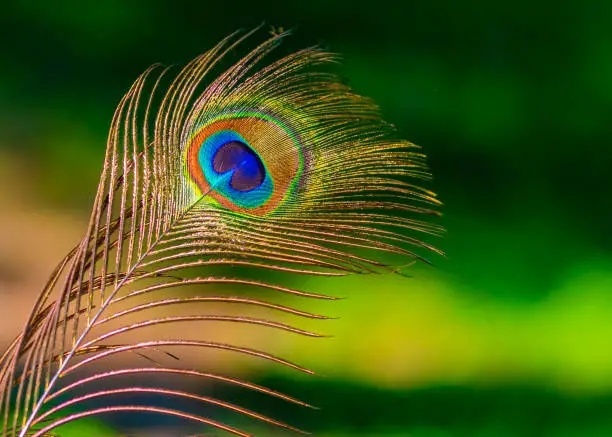
Symbolism and Cultural Significance
Across different cultures and historical periods, these feathers hold profound symbolism.
Historical References
In ancient mythology and folklore, peacock feathers were associated with gods and goddesses, often symbolizing immortality and spiritual awakening.
Cultural Symbolism Across the World
From representing royalty and power in Asia to being a symbol of protection and watchfulness in some cultures, the significance of peacock feathers varies widely.
Art and Fashion
The allure of these feathers transcends their natural habitat, influencing various artistic and fashion endeavors.
Influence on Art
Artists have drawn inspiration from the vibrant colors and intricate patterns of feathers for centuries, incorporating them into paintings, sculptures, and other creative works.
Fashion Trends and Uses
The fashion world has embraced feathers of Peacock for their elegance, often seen adorning haute couture, accessories, and even hairstyles.
Conservation and Protection
The popularity of feathers has also raised concerns about their conservation.
Environmental Impact
Illegal plucking of feathers for commercial purposes and habitat destruction pose threats to the peafowl population.
Conservation Efforts
Efforts are underway to protect these birds and regulate the trade of their feathers through conservation programs and awareness campaigns.
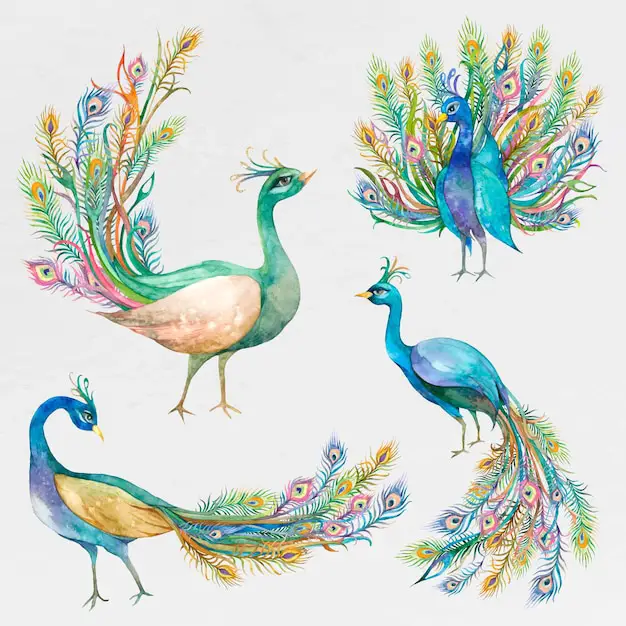
Myths and Legends Surroundings
The magical fascination of them is partly attributed to their involvement in tales and stories.
Folklore and Myths
Stories from different cultures attribute mystical properties and protective powers to these feathers.
Superstitions and Beliefs
Peacock feathers have also been associated with both good and bad luck in various superstitions and beliefs.
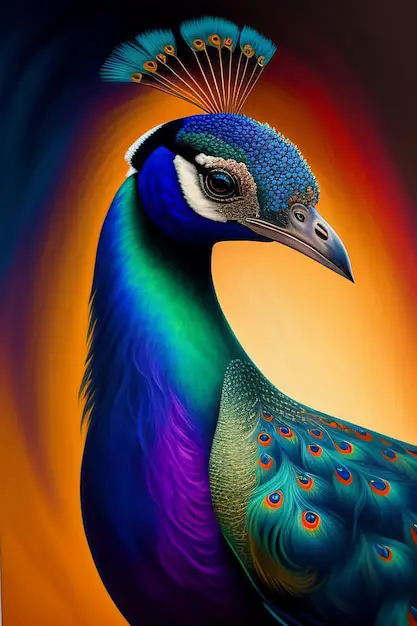
Have Peacock Feather Advantages?
Peacock feathers have several benefits beyond just being beautiful. Not only are these gorgeous plumes beautiful to look at, but they also serve useful purposes. They are perfect for a variety of crafts because of their strong and complex construction, which also lends an air of refinement to fashion items, home décor, and artistic projects. Furthermore, they lend a feeling of grace to any environment they beautify because of their symbolic meaning as symbols of integrity and beauty.
Researchers are fascinated by their natural qualities, which extend beyond their attractive function. Their distinct structure, which includes microscopic components that produce the shimmering effect, sparks interest in disciplines such as optics and robotics. Furthermore, these feathers are said to have beneficial properties in traditional medicine, though further research is needed to confirm this belief.
Feathers are exceptional in both the aesthetic and practical domains since they include not only visual magnificence but also cultural relevance and potential scientific uses.
What are the Beliefs of Peacock Feather in Different Religions?
These feathers carry diverse symbolism in various religious and spiritual beliefs worldwide, adding depth to their allure.
In Hinduism, the peacock is associated with Saraswati, the goddess of wisdom and learning, where the feathers symbolize qualities of openness and knowledge.
In Christianity, the peacock feather holds a significance linked to immortality and resurrection. Its vibrant colors and ability to shed and regrow feathers have been likened to the cycle of life and rebirth.
Buddhism views the peacock as a symbol of purity and, in some traditions, as a representation of compassionate watchfulness.
Across different cultures, feathers are revered for their protective qualities, believed to ward off negative energies or evil spirits, making them common elements in talismans and amulets.
These beliefs underscore the widespread reverence for these feathers, showcasing their universal appeal and cultural significance in fostering spiritual connections and protective energies.
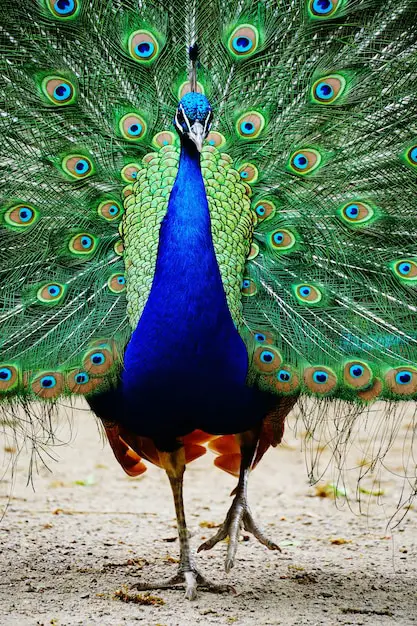
Peacock Feather Benefits in Islam
In Islam, peacock feathers are not explicitly mentioned in religious texts but hold symbolic significance. Some interpretations connect the peacock’s beauty to the concept of God’s creation and His divine artistry. The majestic feathers, with their vibrant hues, evoke admiration for the Creator’s handiwork. While not directly linked to religious practices, the beauty of these feathers aligns with Islamic values of appreciating God’s creation and beauty in the world around us, fostering a sense of awe and gratitude.
How To Identify Original Peacock Feather?
Identifying genuine peacock feathers involves examining specific characteristics. Look for natural iridescence, a result of microscopic structures, showcasing vibrant colors that shift with light. Original feathers will have a sturdy shaft with uniformly spaced barbs and delicate, interconnected barbules forming distinct eye-like patterns. Ensure the edges are smooth and well-defined. Authentic feathers of Peacock feel firm yet flexible and possess a natural luster. Always procure from reputable sources to guarantee authenticity and avoid synthetic imitations. Familiarizing oneself with these traits helps in discerning genuine feathers, ensuring appreciation for their natural beauty and authenticity.

How Much is a Peacock Feather Worth?
The value of a peacock feather varies widely, influenced by factors like size, condition, and legality. Generally, individual feathers might range from a few dollars to a bit more for larger, pristine ones. However, antique or rare feathers with unique qualities can command higher prices among collectors or for specialized purposes. Legally obtained feathers, ethically sourced or acquired from naturally molted birds, might cost more due to their compliance with conservation efforts. Prices also fluctuate in the market based on demand, rarity, and the purpose for which the feathers are sought, contributing to the varying worth.
Can I Carry Peacock Feather in Flight?
Carrying peacock feathers on flights might be subject to airline regulations and local laws. Generally, possessing feathers from protected bird species, like peacocks, might require permits or adhere to specific guidelines to prevent illegal trade and protect wildlife. It’s advisable to check airline policies and local customs regulations beforehand. Some airlines allow small quantities of feathers for personal use, especially if legally obtained and not from endangered species. To avoid complications, it’s prudent to confirm the rules and seek permission or necessary documentation if planning to carry these feathers while traveling by air.
How Peacock Feathers are Collected?
Peacock feathers are typically collected through ethical methods that prioritize bird welfare. The primary means involve waiting for natural molting periods when peafowl shed their feathers naturally, ensuring no harm to the birds. Feather collection might also occur during routine bird grooming in aviaries or sanctuaries. However, unethical practices, like plucking feathers or harming the birds for commercial gain, contribute to illegal trade and endangerment. Ethical collectors prioritize humane methods, sourcing feathers sustainably, often from reputable breeders or sanctuaries, ensuring the birds’ well-being and conservation while obtaining these magnificent plumes.
Scientific Studies and Research
Beyond their aesthetic appeal, peacock feathers have intrigued scientists and researchers. The unique structure and optical properties of these feathers have led to studies exploring their applications in fields like nanotechnology and photonics.
Researchers continue to unravel the secrets behind the iridescence and durability of these feathers, aiming to replicate these properties in various technological advancements.
Uses in Different Industries
The versatility of peacock feathers finds applications beyond aesthetics. From home décor to handicrafts, these feathers add a touch of elegance and uniqueness to various creations. These feathers are also utilized in industries like fishing, where they serve as lures, and in traditional medicine for their perceived healing properties.
Care and Preservation
Preserving the beauty of these feathers requires proper care and attention. Avoiding direct sunlight, gentle cleaning, and proper storage are essential for maintaining their vibrancy. With proper care, these feathers can retain their allure for years, serving as cherished decorative elements.
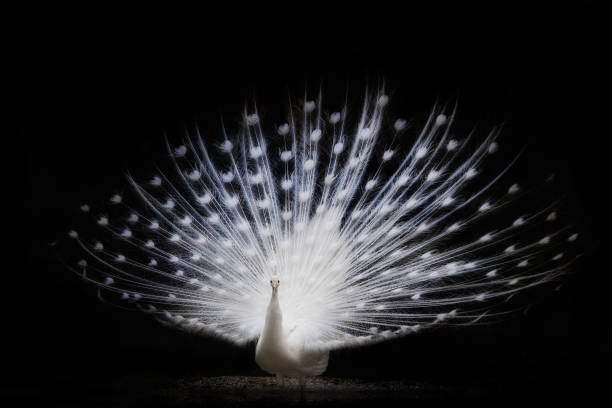
Ethical Considerations and Controversies
The fascination with peacock feathers has sparked ethical debates and controversies. Questions regarding the ethical sourcing and use of these feathers have prompted discussions in various industries. Controversies related to cultural appropriation and environmental impact continue to challenge the widespread use of these feathers.
Conclusion
To sum up, these feathers have a mysterious quality that goes beyond their visual appeal. Their importance in the fields of science, art, and culture never ceases to astound and amaze. We are driven, therefore, to exercise caution in how we enjoy their attractiveness due to moral issues surrounding their use.
- You might be interested to read more Articles. Please Click below:
- Feather Tattoos:15 Mesmerizing Ways To Discover Beauty and Symbolism
Frequently Asked Questions (FAQs)
1. Are peacock feathers legal to own and use?
Yes, in many countries, it’s legal to own and use these feathers obtained through legal means. However, it’s essential to check local regulations and ensure the feathers are ethically sourced to avoid contributing to illegal practices or harming the birds.
2. How can I preserve the colors?
Preserving the vibrant colors of peacock feathers involves keeping them away from direct sunlight, which can fade the hues. Additionally, gentle cleaning with a soft brush or cloth and avoiding exposure to moisture can help maintain their brilliance.
3. What do peacock feathers symbolize in different cultures?
These specific feathers carry diverse symbolism across cultures. They often represent beauty, immortality, integrity, and protection. However, their specific meanings can vary significantly between different societies and historical contexts.
4. Is it ethical to use peacock feathers in crafts and fashion?
Ethical considerations regarding these feathers revolve around ensuring they are obtained sustainably and without harm to the birds. Using naturally shed feathers or those sourced responsibly and supporting conservation efforts can align with ethical practices.
5. How are peacock feathers structured, and what makes them iridescent?
Peacock feathers possess a unique structure, comprising a central shaft with barbs branching off, further divided into barbules. The iridescence is attributed to microscopic structures on these barbules that refract light, creating the vibrant and shifting colors observed in the feathers.
